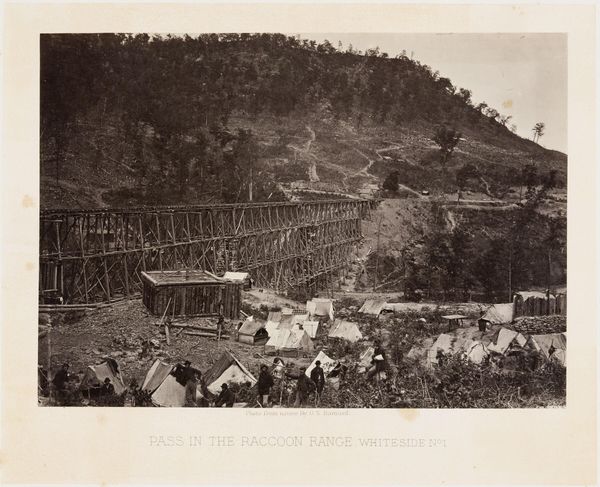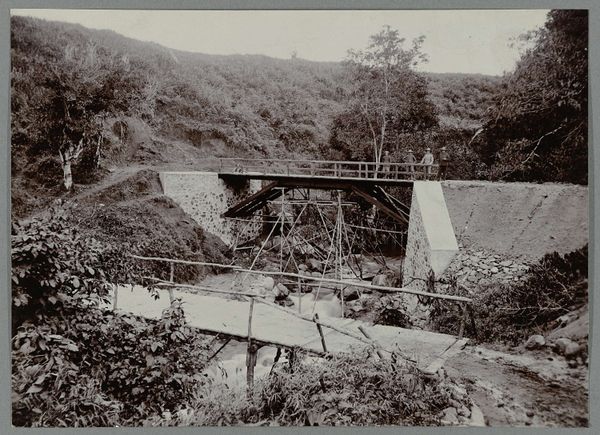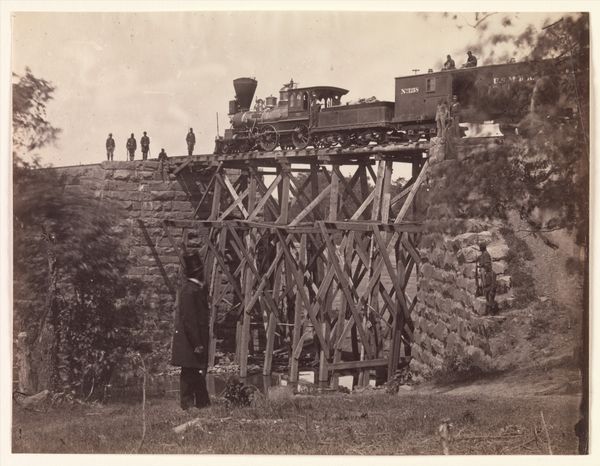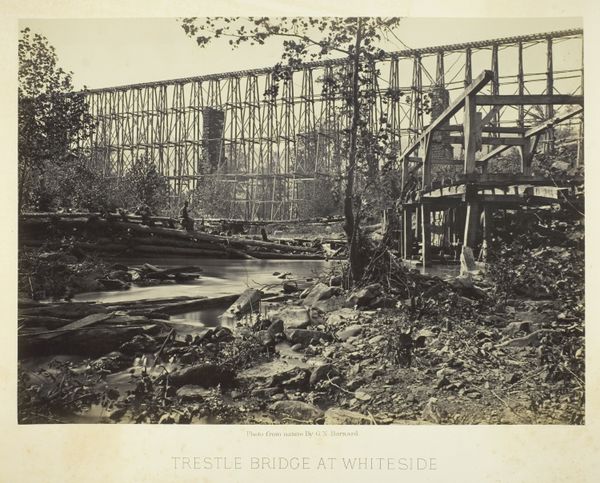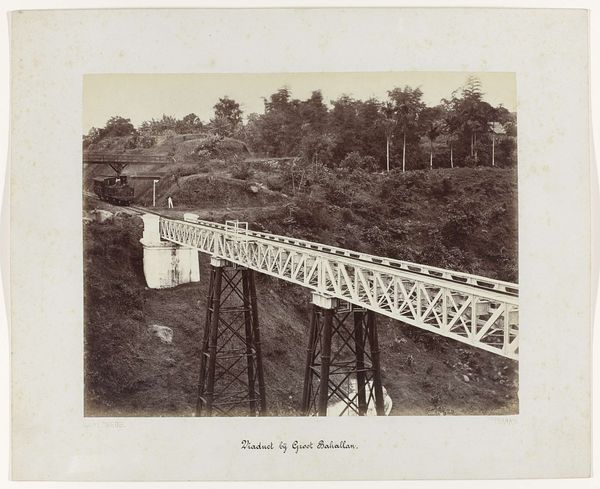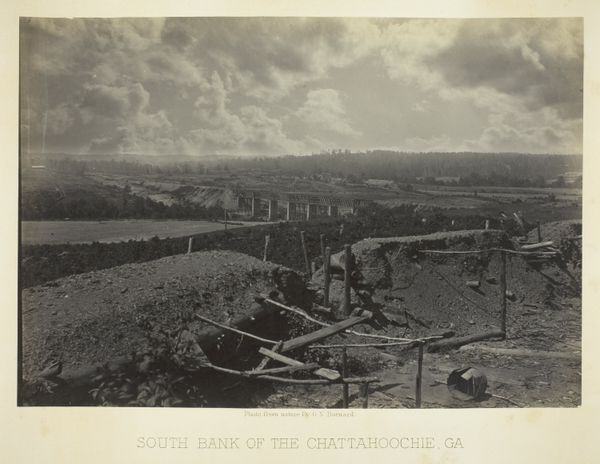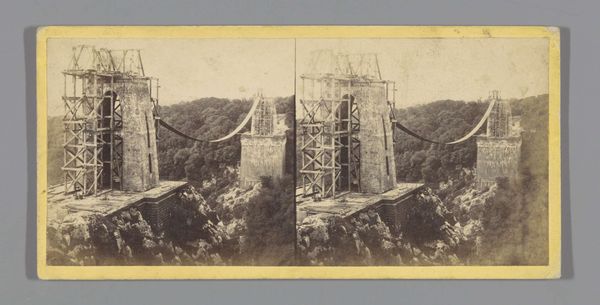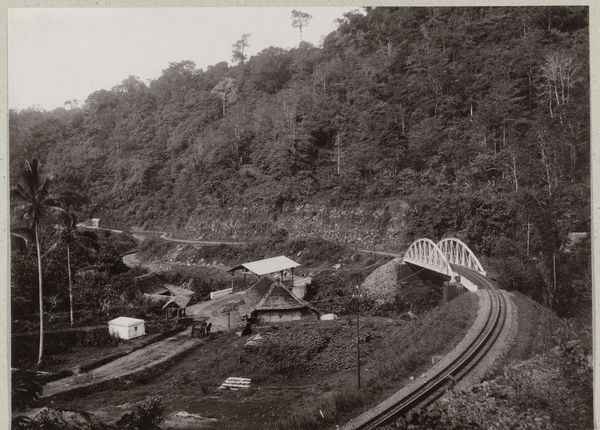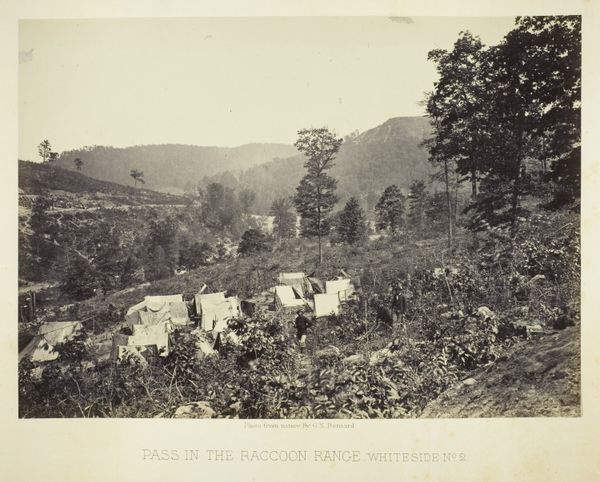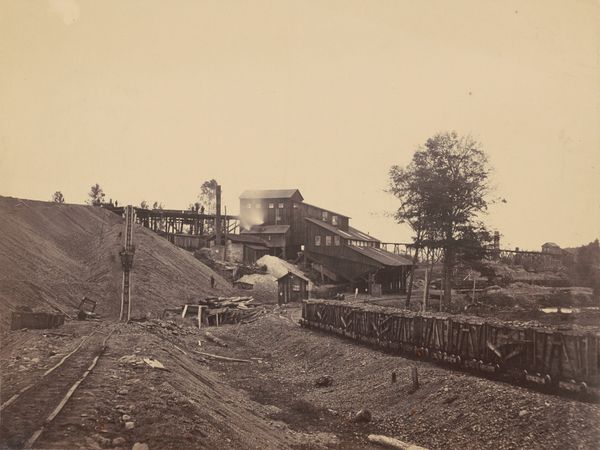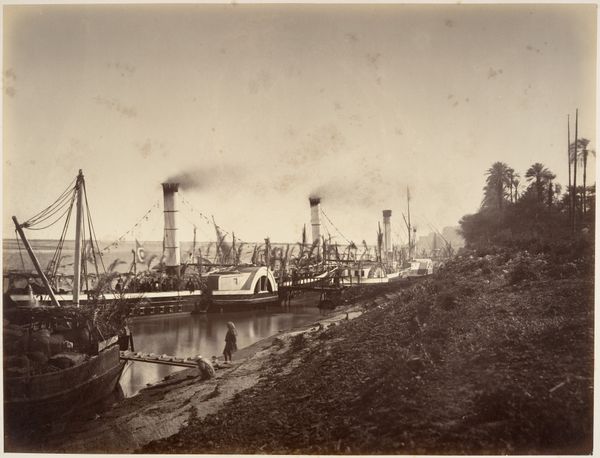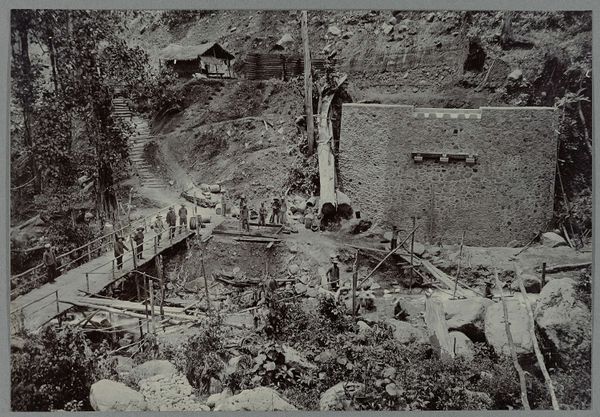
print, photography
#
16_19th-century
# print
#
war
#
landscape
#
photography
#
men
#
united-states
#
history-painting
Dimensions: 25.5 × 35.9 cm (image/paper); 41 × 50.8 cm (album page)
Copyright: Public Domain
Curator: Let's turn our attention to George N. Barnard’s 1864 photograph, “Pass in the Raccoon Range, Whiteside No. 1," currently in the collection of The Art Institute of Chicago. Editor: What immediately strikes me is the quiet stillness of the image despite knowing that it depicts a scene from the Civil War. It’s monochromatic, naturally, but even beyond that, there’s a grayness, a washed-out quality that evokes a sense of weary resignation. Curator: Precisely. Barnard was one of the official photographers of the Union Army. What we’re seeing is not a glorification of battle, but rather a document of military infrastructure—the men, the tents, the recently completed trestle bridge snaking up the hillside in Tennessee. These images, disseminated at the time, helped shape public perception, showing the scale of resources being invested. Editor: It is striking to observe this sprawling encampment nestled below this raw, almost aggressively engineered railway. Look at the bare earth, the felled trees. It is the footprint of conflict and points to the devastating impact of war beyond the battlefield itself, on both people and the land. Curator: Absolutely, and we have to consider the politics of landscape at the time. Romanticized notions of wilderness were very popular, but here, that ideal is confronted with the stark realities of war and industrial expansion. Barnard's photograph offers little picturesque beauty. It’s more a catalogue of activity and control. Editor: I am particularly drawn to the figures scattered throughout the scene; seemingly caught between chores and watchful waiting, their faces lost in shadow. This photo encapsulates the intersection of large-scale political conflicts and individual human experiences. The soldiers here embody the social upheaval inherent in this chapter of US history. Curator: A key element is the dissemination of images such as these that contributed to the collective understanding of a conflict that impacted every facet of life in the United States at that time. Barnard’s photograph contributes to the historical narrative through its careful consideration of setting and the realities of the troops during wartime. Editor: In a world saturated with immediate imagery, pausing to consider how visual narratives shaped perceptions of war then offers valuable insight into how these strategies still affect us today.
Comments
No comments
Be the first to comment and join the conversation on the ultimate creative platform.
